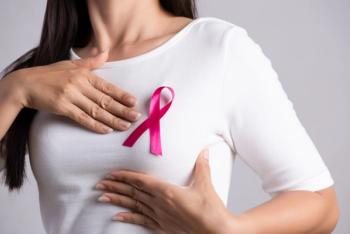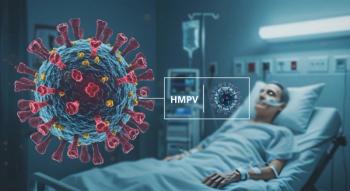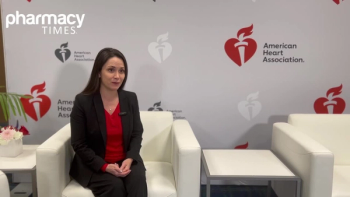
The Ebola Epidemic: What You Need to Know
Learn about the strains involved in the current and past epidemics, the features of the Ebola virus, information about aerosolized spread, and treatments in development.
Learn about the strains involved in the current and past epidemics, the features of the Ebola virus, information about aerosolized spread, and treatments in development.
Ebola Strains
Since 1976, scientists have identified a total of 5 strains of the Ebola virus: the Sudan, Zaire, Bundibugyo, Taï Forest, and Reston strains. Of these, the Taï Forest strain has only been observed in 1 individual, and the Reston strain is thought to only infect animals.
Ebola Virus Features
Ebola is a virus comprised of a 19,000-base nonsegmented, negative-sense RNA genome encased in a protein envelope. Several viral proteins are known, including nucleoprotein (NP), VP35, VP30, and the large (L) protein. Glycoproteins (GPs) mediate attachment and cell entry, while spread between cells and viral assembly are modulated by VP40, the viral matrix protein.
The sequence of the virus involved in the current outbreak is different from the sequence of the viruses that caused earlier ones. Approximately 3% of base pairs have changed, including gene sequences encoding subunits NP, GP, and L. Continuous tracking of Ebola virus mutations indicates that the virus is changing rapidly.
Illness and Epidemiology of Ebola Spread
Ebola spreads through contact with mucosal surfaces or skin abrasions, and it cannot spread through food, air, or water.
Treatment protocols in hospitals generally forbid any skin from showing in the presence of patients with Ebola. Covering all skin at all times has proven to be impracticable for most individuals, particularly in hot climates where air conditioning is not available. In an interview with Science magazine, Dr. Kent Brantley, who survived Ebola infection, said, “It is my opinion that, during an Ebola outbreak, the safest health care job is working in the Ebola treatment unit.” Dr. Brantley believes that being in contact with people who have symptoms but have not yet received a diagnosis of Ebola is far more risky.
By some estimates, the number of cases of Ebola in an area can double as quickly as every 2 weeks.
Airport screening in the United States began in early October. On Tuesday, it was announced that passengers from the affected regions in West Africa will be funneled through 5 major airports in the United States: John F. Kennedy International Airport in New York; Washington Dulles International Airport in Washington, DC; Newark Liberty Internal Airport in New Jersey, Chicago O’Hare International Airport in Illinois, and Hartsfield—Jackson Atlanta International Airport in Georgia.
Travelers from Guinea, Liberia, and Sierra Leone previously entered the United States through 1 of those 5 airports in 94% of cases. With enhanced screening for the Ebola virus being conducted at those airports, passengers from the 3 nations are now required to enter the country through those locations.
During prior screening, a total of 77 individuals of approximately 36,000 passengers were denied boarding over a period of 2 months. Of those individuals, many had malaria, but none were diagnosed with Ebola. The CDC stated that responding to the outbreak requires the ability to travel to affected regions, which is why there has not yet been travel restrictions put in place on flights to and from the affected regions.
Potential for Aerosol Spread
Aerosol-generating procedures increase the risk of spreading Ebola from patients to health care professionals. In addition, Ebola may spread in the form of droplets or aerosols more effectively in low-temperature, low-humidity conditions. Recommendations for contact precautions vary. In general for health care professionals and lab workers, N95 respirators or powered air purifying respirators and full body suit protection are recommended.
There is some evidence of aerosolized transmission of the Ebola virus. Monkeys have contracted Ebola after exposure to either low or high doses of Ebola virus in an aerosolized cell culture, and monkeys with Ebola have spread the virus to healthy monkeys between cages as far as 3 meters apart. In addition, during a 1995 outbreak of Ebola, a single person spread the infection to 19 visitors. Of these visitors, 14 of them touched the patient, but the remaining 5 never came in direct contact with the infected individual, suggesting that spread through some other route may be possible in humans.
Ebola Treatments
ZMapp is an antibody cocktail produced by Mapp Biopharmaceutical in San Diego, California, and has been shown to protect monkeys from contracting Ebola. The antibodies in ZMapp can be manufactured through growth of a genetically engineered plant, Nicotiana benthamiana, which is a relative of the tobacco plant.
BioCryst Pharmaceuticals' antiviral compound BCX4430 has been tested in humans with influenza in a phase 3 trial and was shown to be effective in protecting monkeys from Marburg virus, which is related to the Ebola virus.
RNA-polymerase inhibitors and small interfering RNA nanoparticles have been proposed as modulators of virus replication.
As of October 17, 2014, Chimerex Pharmaceuticals announced that its antiviral drug brincidofovir, which is in phase 3 trials for the treatment of cytomegalovirus and adenovirus, may have some activity against the Ebola virus based on in vitro data. Chimerix is working with the CDC and the US National Institutes of Health (NIH) to test the efficacy of brincidofovir in an animal model. To date, more than 1000 patients have received brincidofovir in clinical trials.
Some scientists have called for a blood transfusion strategy from convalescent patients to patients with active infection. This strategy was used during a 1999 outbreak and was found to help reduce mortality rates. Dr. Brantley donated blood for administration to 1 of the nurses who was infected in Dallas, Texas, with the hope of transferring antibodies to help her fight the virus.
Ebola Vaccines
The NIH and GlaxoSmithKline have jointly fast tracked a phase 1 clinical trial of an Ebola vaccine. Approximately 10,000 doses of the vaccine are being prepared in expectation of a positive trial result.
Another vaccine candidate, rVSV, is under development through a partnership between NewLink Genetics and the Public Health Agency of Canada.
Even with an effective vaccine, scaling up the supply of the medication will be a challenge. In August 2014, investigators in the United Kingdom conservatively estimated that 30,000 individuals will need a vaccine or prophylactic treatment to slow the spread of Ebola in West Africa.
A more recent mathematical model of the Ebola outbreak in West Africa, published in the journal PLOS One on October 16, 2014, forecasted continuing exponential growth in the Ebola outbreak through the end of the current year. Even assuming improved access to health care, more public support, increased hospitalization rates among sick individuals, and rapid introduction and uptake of an effective vaccine, the authors forecasted that the epidemic cannot be brought under control rapidly, because most cases have not yet occurred.
It is important to remember that outbreaks of viral hemorrhagic fevers have not historically been confined to countries in Africa. For instance, in 1967, an outbreak of Marburg hemorrhagic fever occurred in Germany and the former Yugoslavia and was controlled promptly through quarantine and intensive medical care.
A lack of adequate medical care in Africa is a large factor in the current Ebola epidemic. For instance, before the current outbreak, just 51 physicians were serving 4.3 million patients in all of Liberia.
Global financial conditions are part of this deficiency in care and the inadequate response to the outbreak. The World Health Organization (WHO) cut its operating budget by $600 million in 2011 due to financial factors. The WHO has also been limited by a lack of control of its funds. Only about one-third (30%) of the WHO’s budget is directly under its control, due to the appropriation of WHO resources for earmarked programs by countries in which the organization operates. Awaiting donations to compensate for the budget shortfall and earmarked funds has slowed progress, creating a vacuum of leadership. On September 16, 2014, the United States announced it would send military personnel to the region in an effort to help control the crisis.
Final Thoughts
With the rapid mutation of Ebola strains and the rapid exponential spread through Guinea, Sierra Leone, and Liberia, public health officials are concerned about the humanitarian crisis and lack of resources in West Africa. Authorities are also concerned about the possibility of worldwide spread, although the influence of insufficient medical care in West Africa cannot be underestimated. Hemorrhaging fevers have failed to reach epidemic proportions in previous European outbreaks, such as the 1967 outbreak of Marburg virus that tore through the former Yugoslavia and Germany. Scientists continue to research medications and vaccines to treat Ebola and prevent the spread of the disease, while health care workers on the front lines work to isolate and contain the devastating outbreak.
References:
- Martines RB, Ng DL, Greer PW, Rollin PE, Zaki SR. Tissue and cellular tropism, pathology and pathogenesis of Ebola and Marburg Viruses. J Pathol. 2014.
- Lefebvre A, Fiet C, Belpois-Duchamp C, Tiv M, Astruc K, Aho Glélé LS. Case fatality rates of Ebola virus diseases: A meta-analysis of World Health Organization data. Med Mal Infect. 2014;44(9):412-416.
- World Health Organization. Ebola virus disease. http://www.who.int/mediacentre/factsheets/fs103/en/. Accessed October 2014.
- Butler D. Ebola drug trials set to begin amid crisis. Nature. 2014;513(7516):13-14.
- Basler CF. Portrait of a Killer: Genome of the 2014 EBOV Outbreak Strain. Cell Host Microbe. 2014;16(4):419-421.
- Jin J. Ebola Virus Disease. JAMA. 2014.
- CDC. Signs and Symptoms of Ebola. http://www.cdc.gov/vhf/ebola/symptoms/index.html. Accessed October 2014.
- Cohen J. Infectious diseases. When Ebola protection fails. Science. 2014;346(6205):17-18.
- Kucharski A, Piot P. Containing Ebola virus infection in West Africa. Euro Surveill. 2014;19(36).
- Meltzer MI, Atkins CY, Santibanez S, et al. Estimating the future number of cases in the ebola epidemic --- liberia and sierra leone, 2014--2015. MMWR Surveill Summ. 2014;63.
- McCarthy M. US increases Ebola screening at five airports. BMJ. 2014.
- MacIntyre CR, Chughtai AA, Seale H, Richards GA, Davidson PM. Respiratory protection for healthcare workers treating Ebola virus disease (EVD): Are facemasks sufficient to meet occupational health and safety obligations? Int J Nurs Stud. 2014;51(11):1421-1426.
- Zhang Y, Li D, Jin X, Huang Z. Fighting Ebola with ZMapp: spotlight on plant-made antibody. Sci China Life Sci. 2014.
- Heald AE, Iversen PL, Saoud JB, et al. Safety and Pharmacokinetic Profiles of Phosphorodiamidate Morpholino Oligomers with Activity against Ebola Virus and Marburg Virus: Results of Two Single Ascending Dose Studies. Antimicrob Agents Chemother. 2014.
- Chimerix Inc. Frequently asked questions on brincidofovir use in the Ebola outbreak. http://www.chimerix.com/c/discovery-clinical-trials/brincidofovir-ebola.php. Accessed October 2014.
- Burnouf T, Emmanuel J, Mbanya D, et al. Ebola: a call for blood transfusion strategy in sub-Saharan Africa. Lancet. 2014;384(9951):1347-1348.
- Arie S. Trial of Ebola virus vaccine is due to start next week. BMJ. 2014.
- Stanley DA, Honko AN, Asiedu C, et al. Chimpanzee adenovirus vaccine generates acute and durable protective immunity against ebola virus challenge. Nat Med. 2014;20(10):1126-1129.
- Kanapathipillai R, Restrepo AM, Fast P, et al. Ebola Vaccine - An Urgent International Priority. N Engl J Med. 2014.
- Brady O. Scale up the supply of experimental Ebola drugs. Nature. 2014;512(7514):233.
- Rivers CM, Lofgren ET, Marathe M, Eubank S, Lewis BL. Modeling the Impact of Interventions on an Epidemic of Ebola in Sierra Leone and Liberia. Plos One. 2014.
- Boozary AS, Farmer PE, Jha AK. The Ebola Outbreak, Fragile Health Systems, and Quality as a Cure. JAMA. 2014.
- Gostin LO, Friedman EA. Ebola: a crisis in global health leadership. Lancet. 2014;384(9951):1323-1325.
Newsletter
Stay informed on drug updates, treatment guidelines, and pharmacy practice trends—subscribe to Pharmacy Times for weekly clinical insights.


















































































































































































































